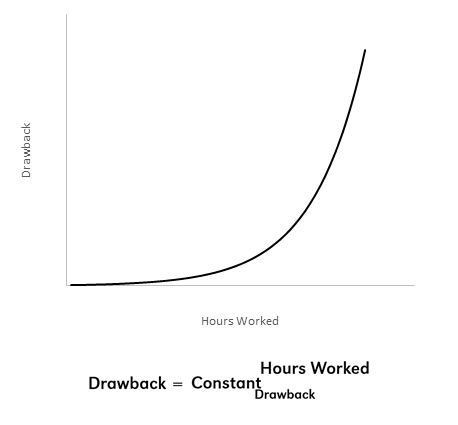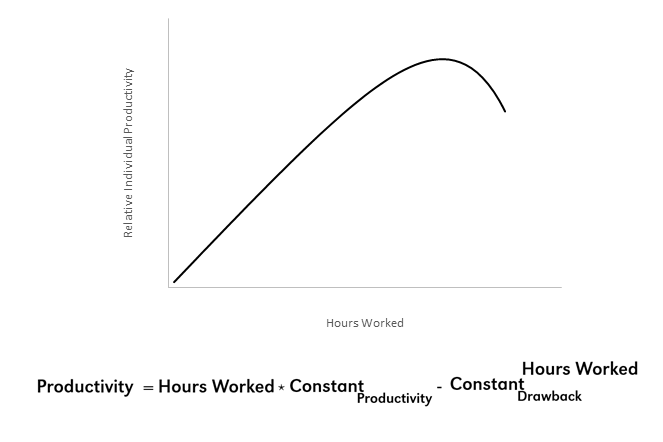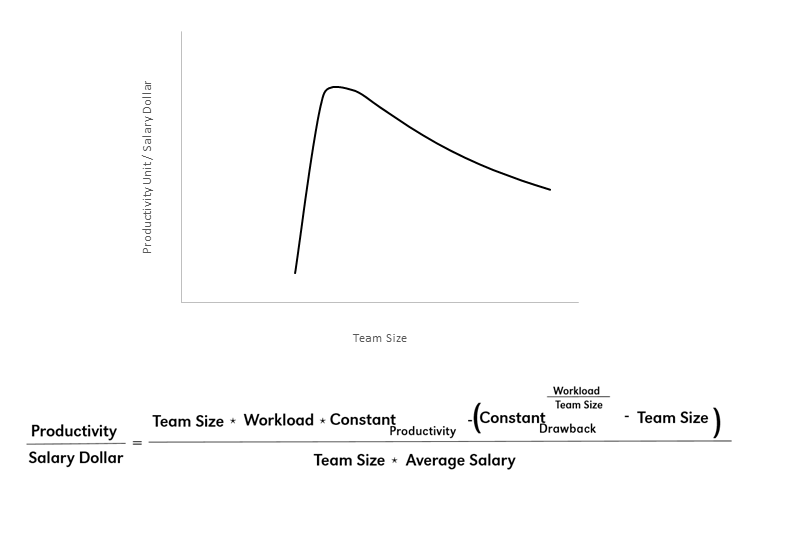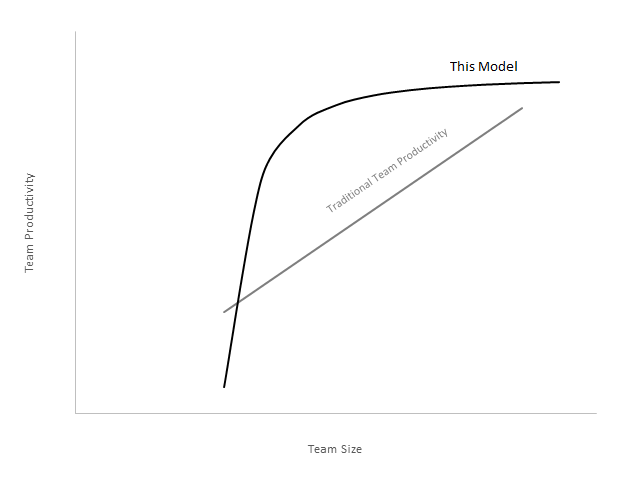The more hours an IT employee works, the more productivity – up to a certain point. For tasks that require significant judgement and attention to detail, like IT, working additional hours results in additional stress, loss of sleep, and other work life balance issues. This drawback gets works as additional hours increase, and further productivity issues arise.
We can model this loss of productivity as a drawback as an exponential function:
Bringing productivity into the model we can see productivity eventually declines as the amount of mistakes made result in productivity loss. After a certain point, accumulated mistakes result in a net loss of productivity as these mistakes need resolved with more labor. This is modeled as:
Extrapolating to a team of full time IT employees, the combined productivity of the team under a constant high workload is not linear as the team size grows. Rather, initial productivity jumps greatly for additional employees, then tapers off. This is modeled as:
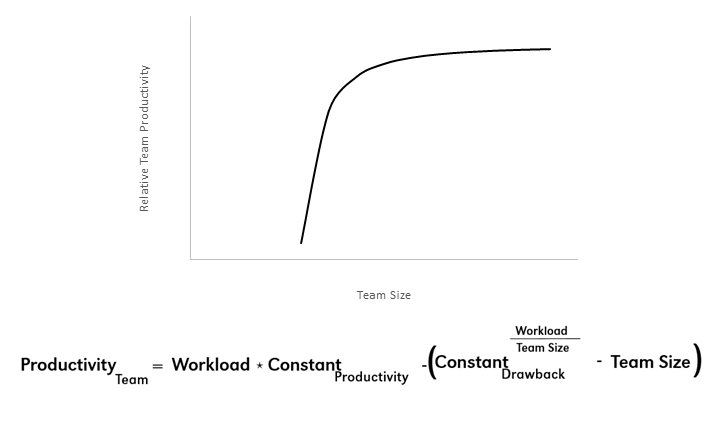 With salaried employees, cost can be modeled by a constant multiplied by the team size. We can then compare productivity unit per cost vs team size under a constant high workload.
With salaried employees, cost can be modeled by a constant multiplied by the team size. We can then compare productivity unit per cost vs team size under a constant high workload.
In the case of the modeled tram, we can view the productivity versus team size versus a standard model (where doubling team size doubles productivity).
How does the productivity of your team fit in?
Supplemental info:
Constants and variables used in model:
Drawback Constant: 1.1
Productivity Constant: 10
Workload Constant: 270
